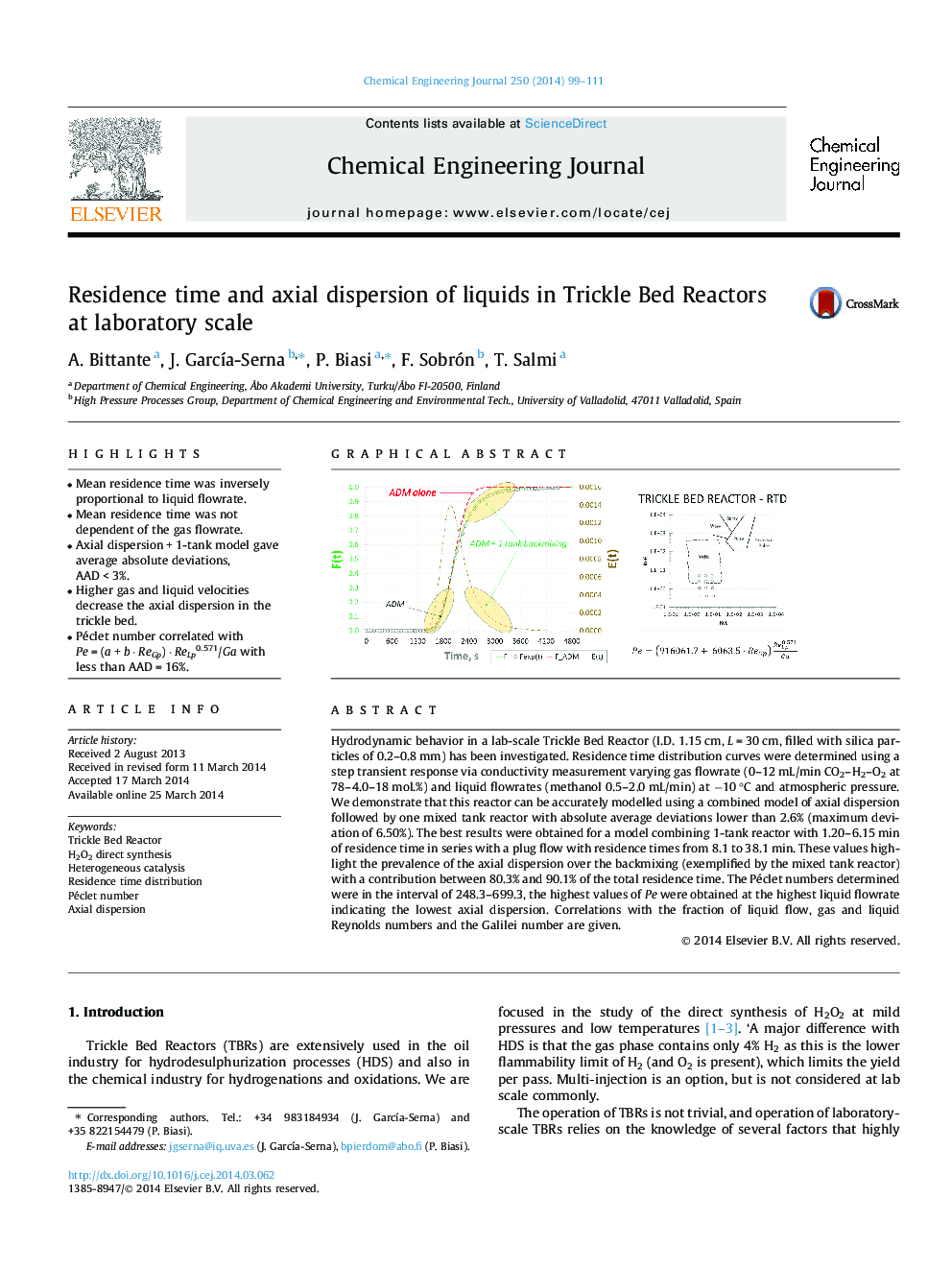| کد مقاله | کد نشریه | سال انتشار | مقاله انگلیسی | نسخه تمام متن |
|---|---|---|---|---|
| 147376 | 456390 | 2014 | 13 صفحه PDF | دانلود رایگان |

• Mean residence time was inversely proportional to liquid flowrate.
• Mean residence time was not dependent of the gas flowrate.
• Axial dispersion + 1-tank model gave average absolute deviations, AAD < 3%.
• Higher gas and liquid velocities decrease the axial dispersion in the trickle bed.
• Péclet number correlated with Pe = (a + b · ReGp) · ReLp0.571/Ga with less than AAD = 16%.
Hydrodynamic behavior in a lab-scale Trickle Bed Reactor (I.D. 1.15 cm, L = 30 cm, filled with silica particles of 0.2–0.8 mm) has been investigated. Residence time distribution curves were determined using a step transient response via conductivity measurement varying gas flowrate (0–12 mL/min CO2–H2–O2 at 78–4.0–18 mol.%) and liquid flowrates (methanol 0.5–2.0 mL/min) at −10 °C and atmospheric pressure. We demonstrate that this reactor can be accurately modelled using a combined model of axial dispersion followed by one mixed tank reactor with absolute average deviations lower than 2.6% (maximum deviation of 6.50%). The best results were obtained for a model combining 1-tank reactor with 1.20–6.15 min of residence time in series with a plug flow with residence times from 8.1 to 38.1 min. These values highlight the prevalence of the axial dispersion over the backmixing (exemplified by the mixed tank reactor) with a contribution between 80.3% and 90.1% of the total residence time. The Péclet numbers determined were in the interval of 248.3–699.3, the highest values of Pe were obtained at the highest liquid flowrate indicating the lowest axial dispersion. Correlations with the fraction of liquid flow, gas and liquid Reynolds numbers and the Galilei number are given.
Figure optionsDownload as PowerPoint slide
Journal: Chemical Engineering Journal - Volume 250, 15 August 2014, Pages 99–111